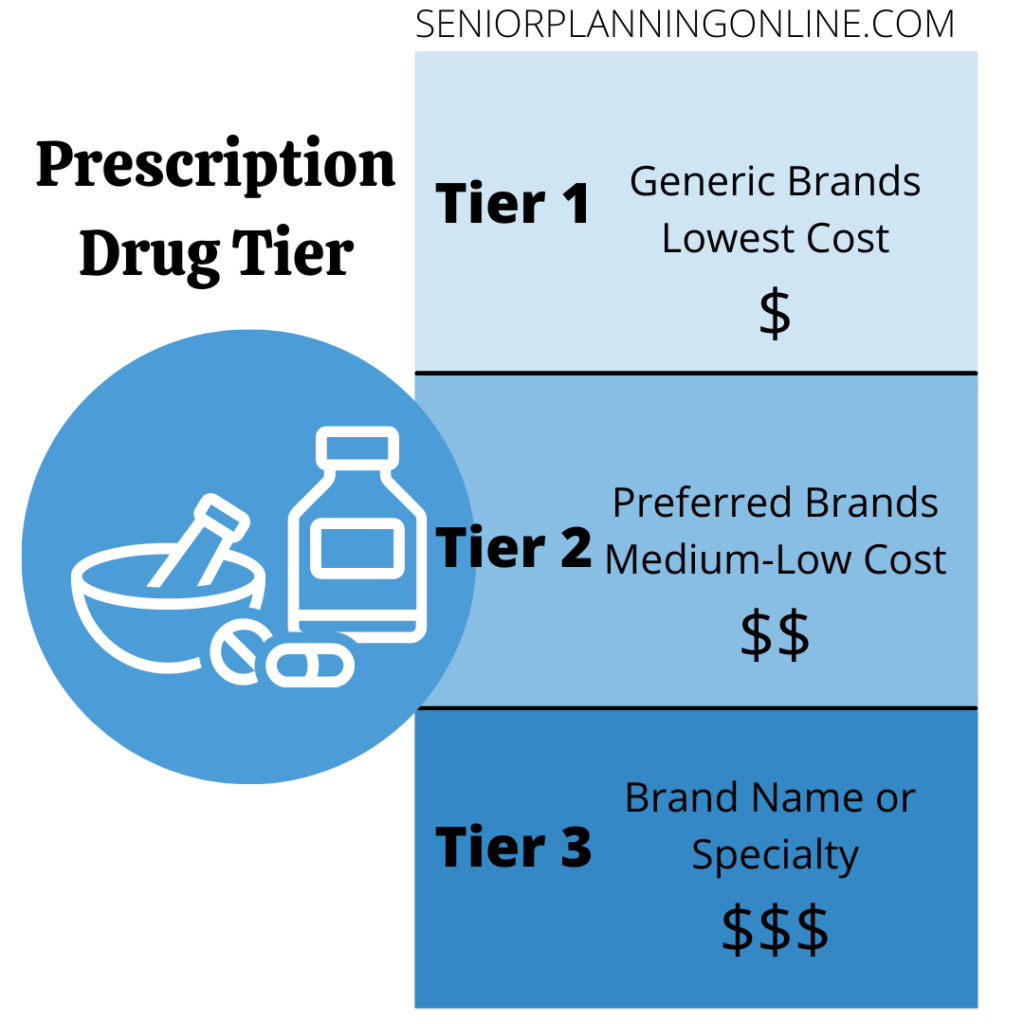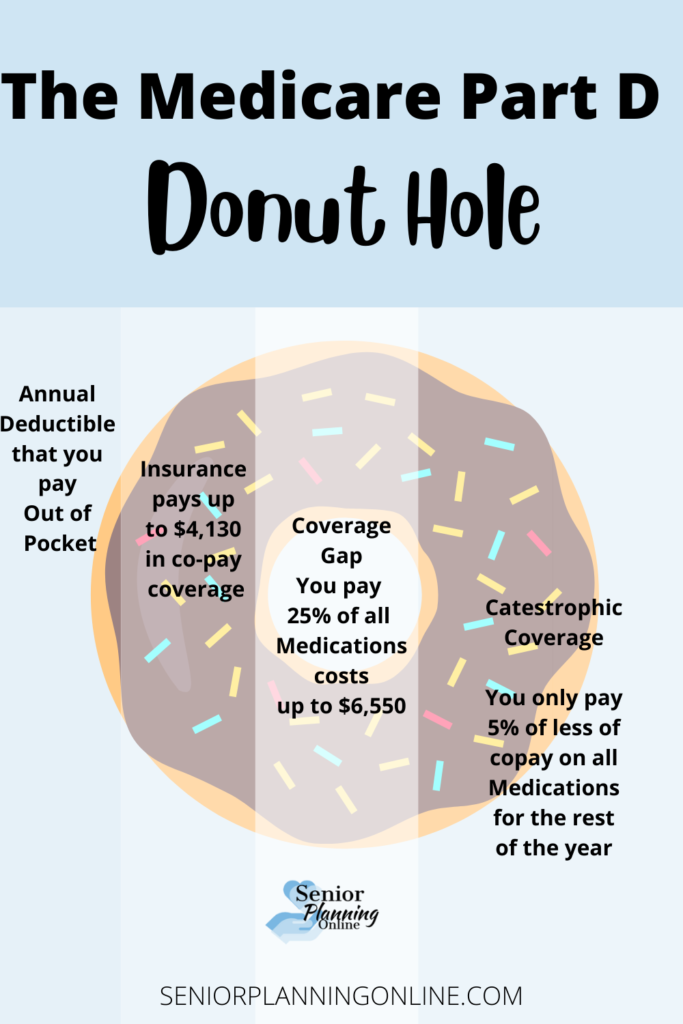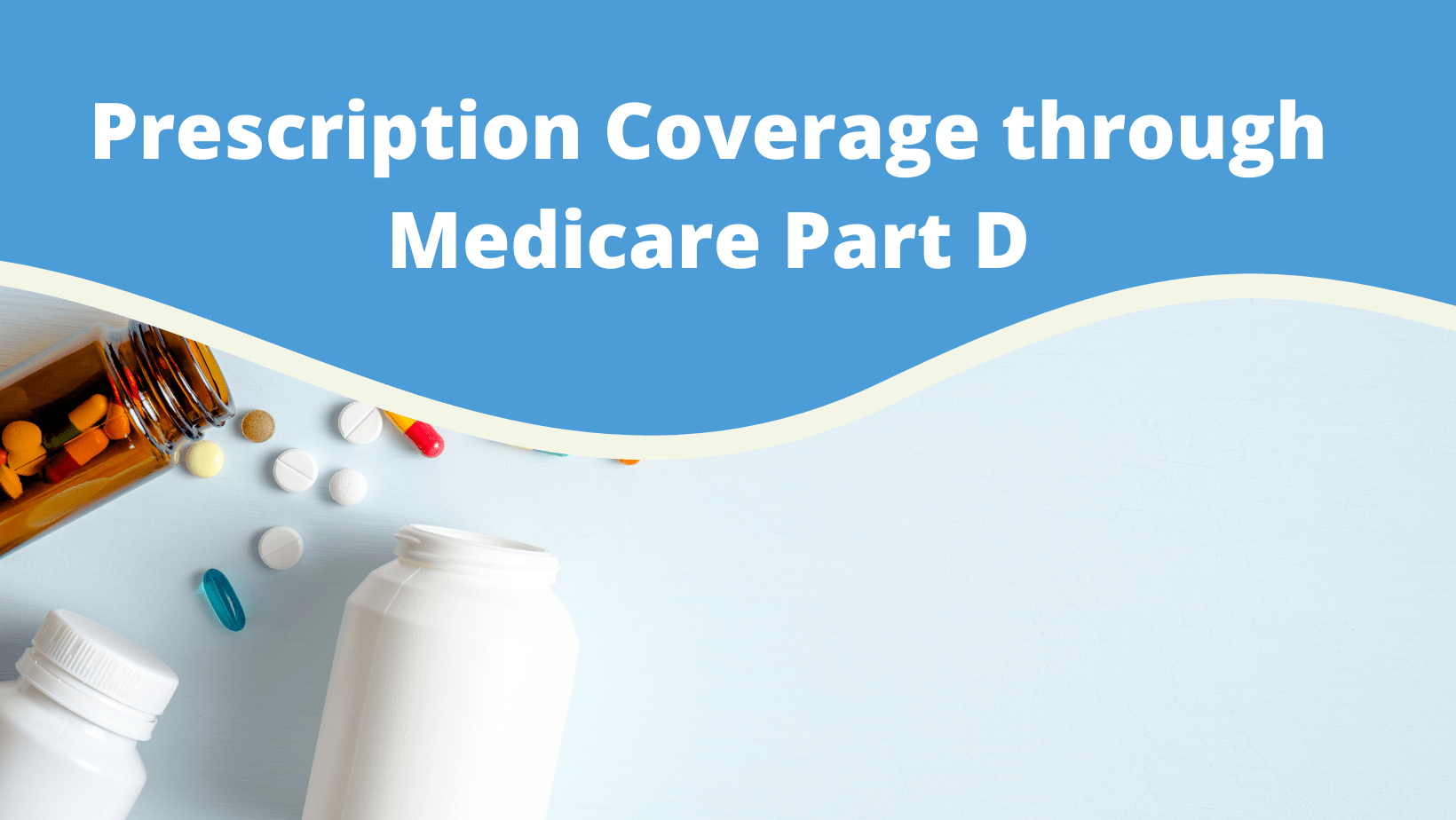I have made it my duty as a hospital social worker to educate and inform as many people as possible about their health insurance options.
It has astounded me how many people are signed up for health insurance programs they know nothing about.
And it certainly isn’t your fault or their fault. It is health insurance companies faults, this includes the government. No one sits down and takes the time to explain the coverage, costs and gaps associated with their insurance plan. Especially with Medicare.
Well folks, I am here to help.
Let’s continue our Medicare series and talk about Medicare Part D. The prescription drug plan under Medicare.
What is Medicare Part D?
As mentioned in my posts: “Services Covered by Medicare Part A” and “Why You Should Care About Medicare Part B”, Medicare also offers additional coverage option.
Let’s review and break it down:
Medicare Part A- covers inpatient acute services (hospitalizations, skilled nursing care, home health)
Medicare Part B- helps cover outpatient and ancillary services (doctor’s visits, medical equipment, diagnostic testing, and SOME prescription drugs)
Medicare Part D- is your main prescription drug plan
Medicare Part D can help cover prescription drugs that are not covered under Medicare Part B.
What drugs are covered by Medicare Part D?
Every drug plan is different. All Medicare drug plans are required to cover at least 2 drugs per drug category. However the drug plans can choose which of these medications they choose to cover.
Plans may choose to offer brand name drugs. Some may offer generic drugs. Some may offer a combination of both.
It’s important to know that the prescription drug plan are allowed to change its list of covered medications throughout the year as long as it meets Medicare guidelines.
The list of drugs/medications that are offered by a Medicare drug plan is called a Formulary.
What is a Prescription Formulary?
A Prescription Formulary is a full list of medications the drug plan will pay for. It also includes “tiers” which describe whether or not a medication is a generic, name-brand, or a preferred-brand.
For example, most prescription plans have 3 tiers of medication types:
Tier 1= Generic brands, generally the lowest cost co-pays
Tier 2= Preferred Brands, generally cost more than tier 1 medications
Tier 3= Non-Preferred Brands or Specialty brands, are the most expensive cost
Then the plan will classify each type of drug they offer under one of these tiers.

Drug Categories often include:
- Antibiotics
- Antivirals
- Antifungals
- Blood Pressure
- Cholesterol
- Diabetes
- Gastrointestinal
- Heart Health
- Mental Health
- Pain medications
- Respiratory Health
- Thyroid
How Much Does Medicare Part D Cost?
There are several prescription drug programs by different companies.
Medicare helps fund these prescription drug programs so that they can offer you a variety of options. The prescription drug programs are like a third party to manage the medication needs you have.
These prescription drug programs are often connected to private and commercial health insurance companies. The companies just choose to offer you the prescription part of their health insurance at a special or reduced cost.
They do this because Medicare pays them a lump sum to offer these services to you and to give you this “special” or “reduced” cost for a drug plan.
Depending on where you live, prescription drug plans usually offer a monthly premium along with an out of pocket deductible.
Monthly premiums can range anywhere from $7 a month to $100 a month.
Usually the higher the premium, the lower the out of pocket deductible.
Go to the Medicare’s Website to find out which prescription programs are available to you and their cost. Find a Medicare Plan Here.
What is the Medicare Part D Donut Hole?
The “Donut Hole” is known as the gap in coverage you have with your Medicare Part D prescription drug plan.
So you have your annual deductible amount that you pay for your prescriptions out of pocket.
After your deductible is met, your insurance pays for a portion and you have a set co-pay amount for your medications.
However, this doesn’t last forever. The Medicare Part D insurance will only pay their portion up to a certain limit. In 2021, that limit is $4,130.
Any additional medications that cost over this limit will give you a gap in coverage. This is where the Donut Hole is.
The Donut Hole phase is where you are now responsible for 25% of any medications until you reach $6,550 spent out of pocket.
After $6,550 has been spent out of pocket for medications, you can now receive catastrophic coverage.
This means that from this point forward you are only responsible for a very small percentage or small copay for medications covered under the formulary. This is for the rest of the year.

How Do I Enroll in a Medicare Part D Program?
First I would suggest making a list of all of the medications you currently take or that have been recommended to you by your doctor.
Next, head over to the Medicare website to the Find A Medicare Plan page. This page lets your review and compare the different types of Medicare Part D programs available to you.
It breaks down the premium costs and deductibles for you. You can also plug in your medications and it will recommend plans for you based on what medications you take.
Make sure you are enrolling in a program that will meet your needs. Additionally, if you are struggling financially and need assistance with paying for the premiums, you may qualify for extra help.
You can go to your State’s Health website (Medicaid) and find out if you qualify for their medication assistance program. Medicaid can help pay for these premiums and co-pays you incur for your medications.
Questions?
If you have any questions about how Medicare Part D coverage works or about a specific Medicare D plan, reach out! I’d love to help!


No responses yet